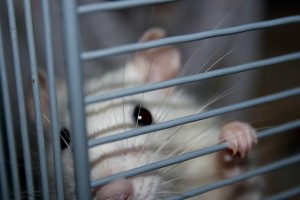
Glyphosate Disrupts Uterus Study Finds
By F. William engdahl
10 July 2016
One of the most difficult aspects of demonstrating the possible risks of GMOs and their paired chemical herbicides such as Monsanto Roundup containing glyphosate is that the GMO chemical companies make it virtually impossible for serious, unbiased scientists to test possible dangers. An uncharacteristically huge resistance inside the member countries of the EU among the population and various NGOs has three times forced a postponement of EU Commission decision to renew the EU license for glyphosate. In 2015 an agency of the World Health Organization labeled glyphosate a “probable carcinogen. Now a team of scientists has published their peer-review findings discovering serious damage to the uterus of rats exposed to glyphosate, the world’s most-used weed-killer. Other alarming signs of high glyphosate toxicity also to humans are being documented as well.
In an article published in the current issue of the international scientific journal, Toxicology, researchers injected a group of newborn rats with a commercial dosage of glyphosate-based herbicide (GBH) and a control group with a saline solution to compare. Astonishingly, it was the first test in the 42 years since Monsanto first brought glyphosate to market as the main component of its most popular weed-killer, Roundup, that tested effects on uterine development of glyphosate-based herbicide exposure. The results are hair-raising and ought to have been featured on the front page of every major world press.
Among the findings of the researchers was that GBH-exposed uteri showed morphological changes when they are exposed for only 7 days after birth. Further, GBH treatment also altered the expression of proteins involved in uterine organo-genetic differentiation. i For the layperson, morphological change in an embryo in a uterus is pretty major, to put it mildly. It means a change in form of the embryo, say a born rat with three ears or grossly deformed head. Altered expression of organo-genetic differentiation means that the GBH diet also affected the very organs of the embryo.
The study’s authors concluded that exposure to glyphosate herbicide may affect female fertility and/or promote the development of uterine cancer. They also report endocrine-disrupting effects of a glyphosate-based herbicide on the uterus of newborn and pre-pubertal rats, supporting the possibility that glyphosate-based herbicides might be endocrine disruptors. The dose of herbicide found to disrupt uterine development in the rats was 2 mg per kg of bodyweight per day, based on the US “reference dose” of pure glyphosate that regulators deem safe to consume every day of our lives for a lifetime.
Adjuvants far more toxic
While the Toxicology study tested injected doses of glyphosate-based herbicides on newborn rat uteri, the Monsanto GMO agrochemical lobby will clearly try to ignore the findings claiming that tests should be made on oral exposures not subcutaneous injected doses to most replicate the transmission path humans world be exposed to. The authors counter that as the newborn would still be feeding directly from the mother, injections are a legitimate measure of exposure.
Roundup and other glyphosate-based herbicides are the most widely used pesticides in the world. Their residues from crop spraying have been found to be among the main pollutants in surface waters. Today more than 80% of edible agricultural GMOs are sprayed with Roundup or other glyphosate-based herbicides.
French leading endocrinologist Gilles-Eric Serralini of Caen University, who has studied hormonal disruption by carcinogens in rats for over thirty years, summarizes the three decades of his group’s research into toxicity of glyphosate-based herbicides. Seralini points out, “They are composed of glyphosate (35–40% in general) and adjuvants that are around 1,000 times more toxic than glyphosate alone, and are also endocrine disruptors below toxic thresholds.”
The French researcher notes, “We studied Roundup’s mammalian toxic effects and its role in endocrine disruption at a time when it was considered as safe as water. Regulatory authorities considered it ridiculous to question its safety.” His researches concluded that since glyphosate is apparently not a steroid-like molecule, “even if it has some endocrine-disruptive activities, we searched for other compounds, hidden in the Roundup formulation, which could be responsible for the aromatase disruption. By 2005 we had concluded that the adjuvants exercised this toxic effect, even if glyphosate alone was demonstrated to bind the active site of aromatase at higher levels, in a semi-irreversible manner.”
Seralini points out that, “Glyphosate, like other so-called ‘active principles’ of pesticides, is always tested in isolation by industry to calculate long-term risksand the acceptable daily intake…Adjuvants are almost always declared as inert and their identity and quantity relative to the total formulation are kept confidential.”
Simply said, while glyphosate, the main focus of the current EU debate over relicensing, evidently itself causes alarming effects in newborn rats, its combination with secret ingredient toxins called adjuvants that are 1,000 times more toxic that glyphosate alone should be subject of an immediate worldwide ban based on the accepted Precautionary Principle until all glyphosate-based herbicides can be neutrally tested and deemed safe or not and in what doses.
Furthermore, the basis on which Monsanto and other agro-chemical makers are able to get away with literal murder by refusing to disclose the identities of their adjuvants paired with glyphosate, is inexcusable on the part of regulators such as the Food And Drug Administration in Washington or the EFSA in the European Union. The idea that protection of patent proprietary secrecy trumps risks to human safety and even human life is pretty crass if not outright criminal.
As a final warning indication to these latest results on the toxicity of glyphosate-based herbicides, doctors and scientists have noted high rates of miscarriage – sometimes called “spontaneous abortion” – in women living in regions of Argentina where GMO Roundup Ready soy is grown and sprayed with glyphosate herbicides.
F. William Engdahl is strategic risk consultant and lecturer, he holds a degree in politics from Princeton University and is a best-selling author on oil and geopolitics, exclusively for the online magazine “New Eastern Outlook”
